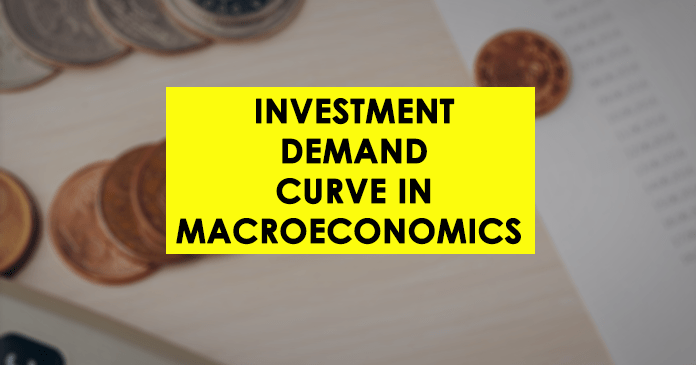The investment demand curve show the amount of money spent on investments each year at each interest rate, assuming that all other investment conditions remain constant.
In other words, the investment demand curve implies a relationship between the quantity of investment and the economy’s interest rate.

The curve indicates that when the interest rate declines, the amount of money invested per year increases.
To understand the connection between interest rates and investment, remember that investment is an addition to capital. Capital is anything made in order to make additional goods and services.
Determinants of Investment Demand
The factors that affect investment demand are listed below.
- Expectations
- Level of economic activity
- Stock of capital
- Cost of capital goods
- Other factor costs
Any change in these can change the investment demand curve.
Expectations
Future production capacity is affected by changes in capital stock. As a result, capital change plans are highly reliant on expectations.
A company is considering future sales. When expectations change as the expected return on investment increases, the investment demand curve shifts to the right. Similarly, lower profitability expectations shift the investment demand curve to the left. Also, lower profitability expectations shift the curve to the left.
Level of Economic Activity
To generate products and services, businesses require capital. The need for capital increases as the amount of production rises. This will lead to a huge investment. As a result, an increase in GDP will most likely cause the investment demand curve to move to the right.
Stock of capital
The amount of capital already in use affects the level of investment in two ways.
- As more investment replaces depleted capital, more capital will lead to more investment.
- More capital stock may tend to decrease as investments are made to adjust the capital stock to the desired level.
Cost of capital goods
When drawing the investment demand curve, changing a constant variable affects the curve. The cost of capital goods is one of these factors. For example, if the cost of building constructions rises, the quantity of money available for investment at any interest rate is expected to decrease. As a result, the id curve moves to the left.
Other factor costs
Companies have a wide range of choices regarding how products can be manufactured. For example, a factory uses a complex capital facility and relatively few employees. Or it uses more employees and relatively less capital. The choice would be to use capital.
It affects the cost of capital goods and interest rates, but it also affects labor costs. Capital demand is likely to increase as labor costs rise.
Conclusion
The interest rate has an impact on investment. The investment demand curves show the negative relationship between investment and interest rates.
Expectations, the level of economic activity, the stock of capital, the price of capital, and the prices of other factors all affect the position of this curve.


